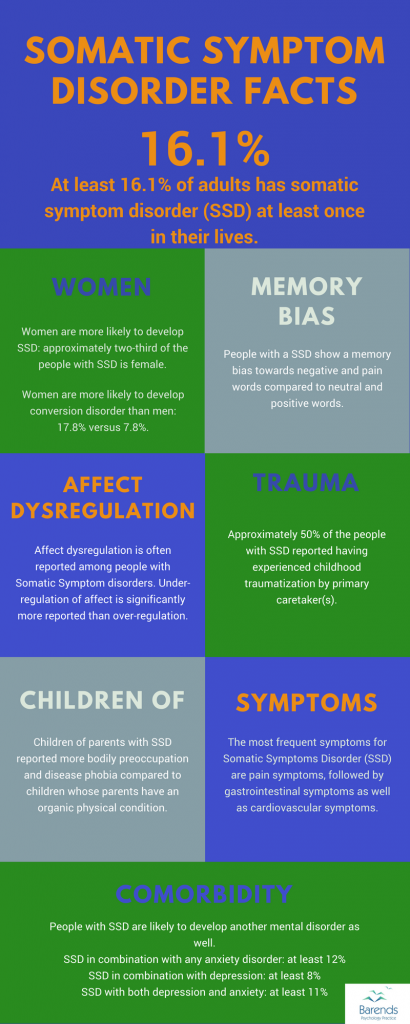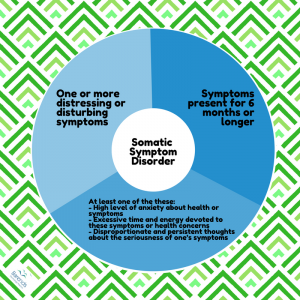Somatic symptom disorder diagnosis

Somatic symptom disorder (SSD) is much more common than many other mental disorders, but often overlooked or misdiagnosed by professionals. As a consequence, people with SSD have twice the annual medical care costs [1]. A proper somatic symptom disorder diagnosis is very important to make sure people find the right treatment for the mental condition and recover as soon as possible. Without a proper somatic symptom disorder diagnosis, people with SSD may feel misunderstood, remain distressed, and disabled [1]. Consequently, they stay in bed more often, take more sick leave, and are more often than other people unemployed [1].
This page discusses the somatic symptom disorder symptoms and highlights the differences in both somatization disorder and somatic symptom disorder. Somatic symptom disorder used to be called somatization disorder, but with the release of the new DSM V they adjusted its criteria a little bit.
If you are interested in the somatic symptom disorder test, please click here.
Jump to:
At Barends Psychology Practice, we offer (online) therapy for somatic symptom disorder. Contact us to schedule a first, free of charge, online session. (Depending on your health insurance, treatment may be reimbursed).
Somatic symptom disorder diagnosis – the changes
Somatic symptom disorder (SSD) used to be called somatization disorder in the DSM IV-TR. The diagnositc criteria for both disorders are slightly different:
- – disproportionate and persistent thoughts about the seriousness of the symptom
- – persisting high anxiety about symptoms or health
- – excessive time and energy spend on health and symptoms
(Advertisement. Scroll down for the DSM V criteria for somatic symptom disorder).
Somatic symptom disorder diagnosis – DSM V
The diagnosis most psychiatrists and psychologists nowadays use is the one in the DSM V:
- A) One or more somatic symptoms that are distressing or result in significant disruption of daily life.
- B) Excessive thoughts, feelings, or behaviours related to the somatic symptoms or associated health concerns as manifested by at least one of the following:
-
- Disproportionate and persistent thoughts about the seriousness of one’s symptoms.
-
- Persistently high level of anxiety about health or symptoms.
-
- Excessive time and energy devoted to these symptoms or health concerns.
- C) Although any one somatic symptom may not be continuously present, the state of being symptomatic is persistent (typically more than 6 months).
Literature
- [1] Barsky, A. J., Orav, E. J., & Bates, D. W. (2005). Somatization increases medical utilization and costs independent of psychiatric and medical comorbidity. Archives of general psychiatry, 62, 903-910.

